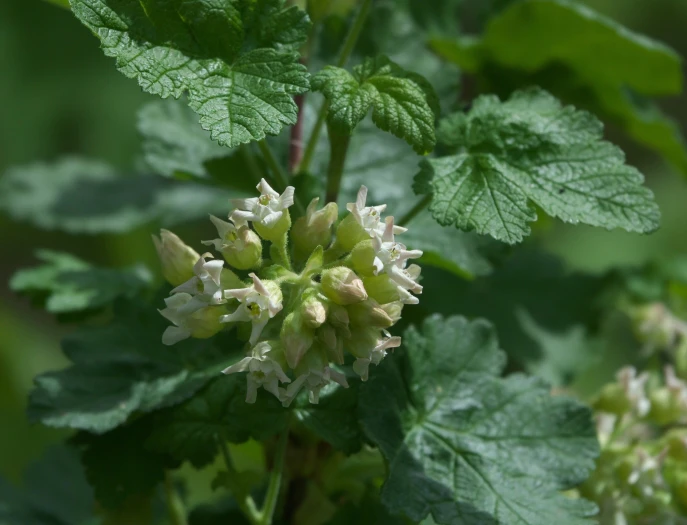Sticky Currant
(Ribes viscosissimum)
Sticky Currant (Ribes viscosissimum)
/
/

Robert Webster
CC BY-SA 4.0
Image By:
Robert Webster
Recorded By:
Copyright:
CC BY-SA 4.0
Copyright Notice:
Photo by: Robert Webster | License Type: CC BY-SA 4.0 | License URL: http://creativecommons.org/licenses/by-sa/4.0/ | Rights Holder: Robert Webster | Publisher: iNaturalist | Date Created: 2021-05-30T17:47:12-07:00 |























Estimated Native Range
Climate Requirements
| • Precipitation | 7" - 101" |
| • High Temp. | 53°F - 99°F |
| • Low Temp. | 0°F - 43°F |
Summary
Ribes viscosissimum, commonly known as sticky currant, is a deciduous shrub native to a variety of habitats including moist mountain forests, streambanks, and the understory of coniferous woodlands across western North America, from British Columbia to California, and eastward to Montana and Wyoming. It typically grows 3-7 feet tall and wide, with distinctive sticky glandular hairs covering the stems. The leaves are palmately lobed, usually with three lobes, and have toothed margins. In spring to early summer, sticky currant produces clusters of small, tubular flowers that are white to greenish-yellow, which are followed by blue-black berries that are generally not considered edible due to their insipid taste.
Sticky currant is valued for its wildlife-friendly attributes, as it provides nectar for pollinators like Bombus species (bumblebees) and its foliage serves as a food source for butterfly larvae. It is used in naturalistic plantings, restoration projects, and as an understory shrub in woodland gardens. This plant prefers partial shade to full sun, moist to well-drained soils, and requires regular watering, especially in drier climates. While it is not typically troubled by serious pests or diseases, powdery mildew can sometimes be an issue in humid conditions.CC BY-SA 4.0
Sticky currant is valued for its wildlife-friendly attributes, as it provides nectar for pollinators like Bombus species (bumblebees) and its foliage serves as a food source for butterfly larvae. It is used in naturalistic plantings, restoration projects, and as an understory shrub in woodland gardens. This plant prefers partial shade to full sun, moist to well-drained soils, and requires regular watering, especially in drier climates. While it is not typically troubled by serious pests or diseases, powdery mildew can sometimes be an issue in humid conditions.CC BY-SA 4.0
Plant Description
- Plant Type: Shrub
- Height: 2-5 feet
- Width: 2-4 feet
- Growth Rate: Moderate
- Flower Color: Pink, White
- Flowering Season: Spring, Summer
- Leaf Retention: Deciduous
Growth Requirements
- Sun: Full Sun, Part Shade
- Water: Medium
- Drainage: Fast, Medium
Common Uses
Bee Garden, Bird Garden, Edible*Disclaimer: Easyscape's listed plant edibility is for informational use. Always verify the safety and proper identification of any plant before consumption., Low Maintenance
Natural Habitat
Moist mountain forests, streambanks, and the understory of coniferous woodlands across western North America
Other Names
Common Names: Mountain Currant, Sticky Gooseberry
Scientific Names: Ribes viscosissimum, Coreosma viscosissima, Ribes hallii, Ribes viscosissimum var. hallii, Ribes viscosissimum var. purshii
GBIF Accepted Name: Ribes viscosissimum